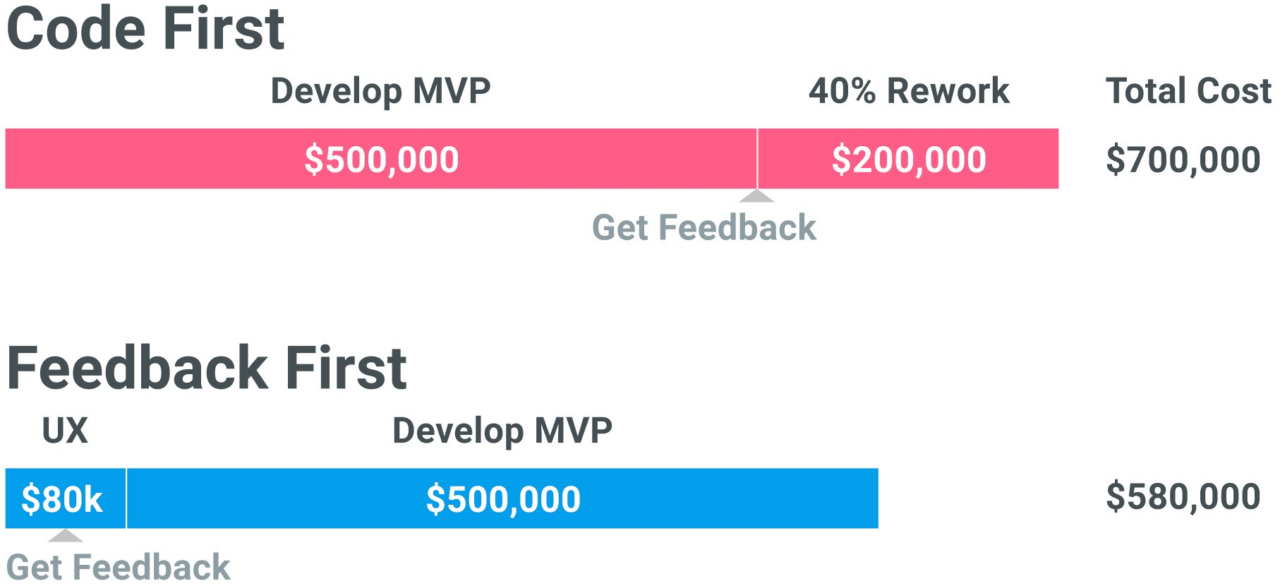The Problem
Most product leaders presume the only way to measure progress is with code. This notion is one of the 12 principles in the Agile Manifesto: “Working software is the primary measure of progress.” The problem is that this way of thinking is expensive, especially with regard to new products that haven’t been validated with users.
Going from hypothesis directly to development is the equivalent of exploratory surgery, where you bleed out all your budget in the operating room.
Let’s look at a cost scenario for a typical MVP, or minimum viable product:

The way to align your product with users’ needs is to get feedback. If you code first, that usually results in unnecessary and expensive rework. According to the Massachusetts Innovation and Technology Exchange, developers typically spend 50% of their time reworking things within a project. So the above 40% rework is probably on the low side.
Another cost not shown here is the brand damage you do by bringing a flawed product to market. For the entire time you do the rework, your product is missing the mark with users, and the word gets out. Bad press makes it a lot harder to get customers to come back when you have the revised version.
“88% of online consumers are less likely to return to a site after a bad experience.”
Justin Mifsud, founder, Usability Geek
But it goes deeper than this. What if it turns out there isn’t a market at all for your product? Do you want to spend $500k to find that out? No. And you don’t have to.
The Solution: UX
Truth is, it is possible to test an idea with users and refine it while it’s still in a mockup stage. With a small UX engagement, mockups can be iterated rapidly and affordably, so there can be more feedback cycles in a short period of time. This means the costly development process will be much more on target from the beginning, and won’t require expensive rework. If you learned that your idea is completely non-viable in the second scenario, you spent $420K less to find that out.
Then there’s efficient development. With a little UX involvement throughout, the Institute of Electrical and Electronic Engineers estimates that development costs can be reduced by 30-50%. So in the second scenario, that $500k of development might go significantly smoother and quicker, saving additional costs.
At launch, your product is going to be much more aligned with what users want, and that means GOOD press.
Bottom Line
There are a lot of ways to spend money bringing a new product to life, and the failure rate is higher than most of us would care to admit. But starting with development from the beginning is most likely going to mean premature budget ejaculation.
If you’re trying to get a new product green-lit, a much better way is to start small with a UX concepting project. For a fraction of the cost of developing the idea, you can validate and refine the concept BEFORE you build. The product’s chances of success will multiply, and your future self will thank you.
P.S. My colleagues at Primitive Spark are experts at starting small and would be happy to help point you in the right direction:










